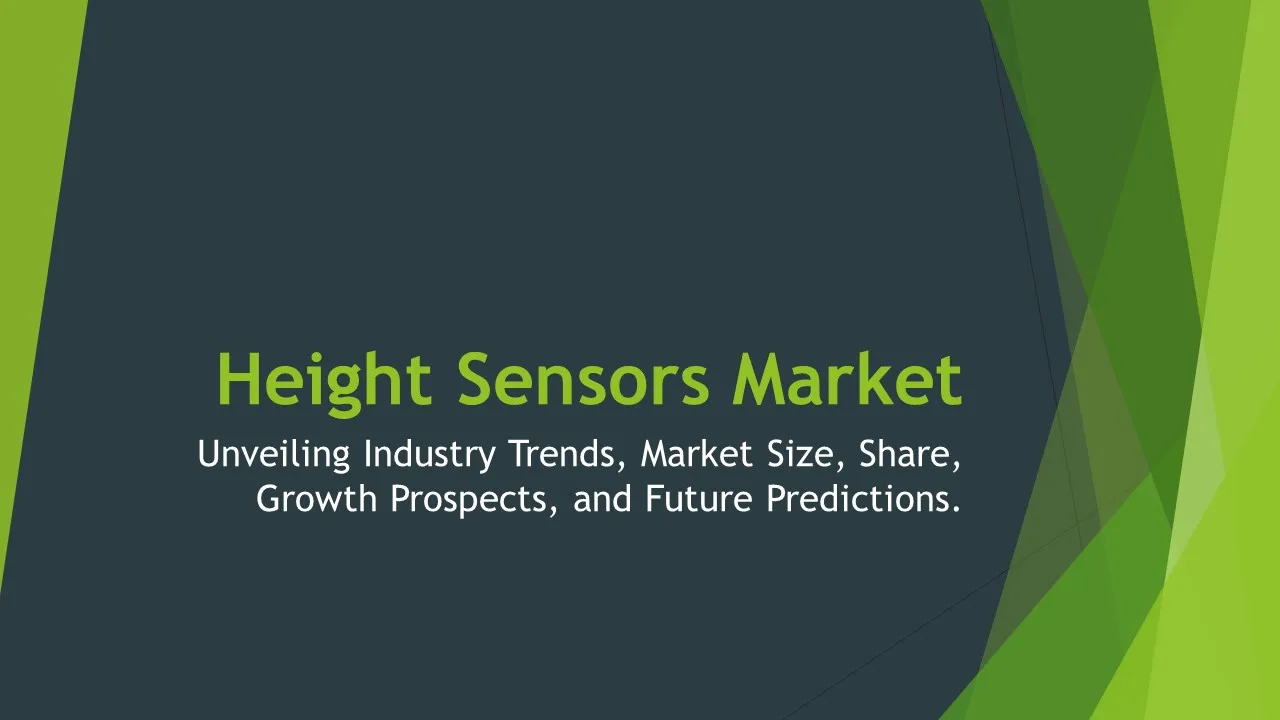LED Video Billboard
LED Video Billboard Market Segments - by Type (Fixed LED Video Billboards, Mobile LED Video Billboards, Rental LED Video Billboards, Perimeter LED Video Billboards, and Transparent LED Video Billboards), Application (Outdoor Advertising, Sports & Entertainment, Traffic Management, Public Events, and Retail Stores), Size (Small, Medium, Large, Extra-large, and Customized), Color Display (Monochrome, Tri-color, Full-color, Dual-color, and Single-color), and Region (North America, Europe, Asia Pacific, Latin America, and Middle East & Africa) - Global Industry Analysis, Growth, Share, Size, Trends, and Forecast 2025-2035
- Report Preview
- Table Of Content
- Segments
- Methodology
LED Video Billboard Market Outlook
The global LED video billboard market is expected to reach approximately USD 15 billion by 2035, growing at a compound annual growth rate (CAGR) of around 14% during the forecast period from 2025 to 2035. This growth is driven by the increasing demand for dynamic and engaging advertising formats that offer high visibility and versatility in marketing campaigns. The rise in urbanization and infrastructure development in emerging economies has resulted in a growing need for innovative signage solutions, leading to an upsurge in the adoption of LED video billboards across various sectors. Furthermore, technological advancements in LED display technology, such as improved energy efficiency and resolution, are contributing to the market's expansion, making these advertising platforms more attractive to businesses looking for cost-effective marketing solutions.
Growth Factor of the Market
The growth of the LED video billboard market can be attributed to several key factors that are reshaping the advertising landscape. Firstly, the rapid proliferation of digital technology and the increasing reliance on digital marketing strategies have made LED video billboards a popular choice for advertisers looking to capture consumer attention. Secondly, the versatility of these billboards, which can be easily updated and customized for various campaigns, enhances their appeal over traditional static signage. Thirdly, the shift toward outdoor advertising due to the effectiveness of high-impact visuals in engaging audiences is driving demand for LED video billboards. Additionally, the increasing investment in smart city initiatives across the globe is providing new opportunities for the deployment of advanced visual advertising solutions. Finally, the growing emphasis on environmental sustainability is leading advertisers to opt for energy-efficient LED technology, further propelling market growth.
Key Highlights of the Market
- The market is projected to reach USD 15 billion by 2035.
- CAGR of 14% expected during the forecast period from 2025 to 2035.
- Increasing urbanization is driving the demand for LED video billboards.
- Technological advancements are enhancing display quality and efficiency.
- Growing preference for dynamic advertising formats is reshaping marketing strategies.
By Type
Fixed LED Video Billboards:
Fixed LED video billboards represent a significant segment within the market, known for their permanence and long-term advertising capabilities. These billboards are typically installed in high-traffic areas where they can attract a substantial audience. Their static nature allows advertisers to display consistent branding messages over extended periods, making them a cost-effective solution for businesses. Due to advancements in LED technology, fixed LED video billboards now offer high-resolution displays that enhance visual appeal, making them ideal for large-scale advertising campaigns. Moreover, their robust construction ensures durability against varying weather conditions, thereby providing a reliable advertising platform for businesses year-round.
Mobile LED Video Billboards:
Mobile LED video billboards have gained popularity for their flexibility and the ability to reach diverse audiences across different locations. These billboards are mounted on vehicles, allowing advertisers to promote their messages in various high-traffic areas and events. This dynamic advertising format provides brands with the opportunity to target specific demographics effectively, as they can move to strategic locations based on audience behavior. The mobility of these billboards makes them particularly appealing for events, festivals, and promotions where foot traffic is anticipated. As a result, the demand for mobile LED video billboards has surged, contributing significantly to the overall market growth.
Rental LED Video Billboards:
Rental LED video billboards cater to a specific niche in the advertising market, offering a cost-effective solution for short-term campaigns. These billboards are typically used for events, concerts, festivals, and exhibitions where advertisers seek to make a temporary but impactful presence. Companies can rent these displays for the duration of their events without the significant upfront investment associated with purchasing a permanent billboard. The flexibility of rental agreements allows businesses to adapt their advertising strategies quickly and efficiently as market conditions change. This segment's growth has been fueled by an increasing number of events and public gatherings that require large-scale advertising solutions.
Perimeter LED Video Billboards:
Perimeter LED video billboards are commonly used in sports facilities and entertainment venues, providing dynamic advertisements and enhancing the viewer experience. These billboards are strategically placed around the periphery of stadiums and arenas, ensuring high visibility for spectators while also capturing the attention of individuals outside the venue. The ability to showcase advertisements in real-time during events allows advertisers to engage directly with audiences, creating memorable marketing moments. Additionally, perimeter LED video billboards can be integrated with event programming, providing information and updates to attendees while simultaneously promoting sponsors and partners. This segment continues to see significant investments as venues seek to enhance their revenue streams through innovative advertising solutions.
Transparent LED Video Billboards:
Transparent LED video billboards are an emerging trend in the advertising industry, offering a unique approach to display advertising. These billboards utilize transparent technology, allowing them to blend seamlessly with their surroundings while still delivering captivating visual content. This innovative design makes them suitable for use in retail environments, storefronts, and high-end commercial buildings, where they can attract consumers without obstructing views. The ability to display high-quality advertisements while maintaining transparency is particularly appealing to brands seeking to create a modern and sophisticated image. As urban spaces evolve and the demand for multifunctional advertising solutions increases, transparent LED video billboards are expected to gain traction, contributing to the overall market growth.
By Application
Outdoor Advertising:
Outdoor advertising is one of the primary applications driving the demand for LED video billboards. These billboards provide an effective means of reaching a large audience in high-traffic urban areas, shopping districts, and along major roadways. The vibrant visuals and motion graphics enabled by LED technology capture attention and convey messages with greater impact than traditional static signage. As brands look to enhance their visibility and engage consumers outside their homes, outdoor advertising through LED video billboards has become a preferred choice. Furthermore, the ability to change content dynamically allows advertisers to tailor their messages based on time, location, and audience preferences, increasing the effectiveness of their campaigns.
Sports & Entertainment:
The sports and entertainment sector has significantly embraced LED video billboards, both in-stadium and at outdoor events. These billboards enhance the spectator experience by displaying live updates, replays, and advertisements during games and shows. The interactive nature of LED technology allows for engaging and immersive content that resonates with audiences, thus driving fan engagement and enhancing brand visibility. Event organizers and sponsors benefit from the strategic placement of LED video billboards, as they can effectively promote products and services to captive audiences. As the popularity of sports and entertainment events continues to rise, the demand for high-quality LED displays in these venues is expected to grow correspondingly.
Traffic Management:
LED video billboards play a crucial role in traffic management by providing real-time information to drivers and commuters. These displays can convey essential messages related to traffic conditions, accidents, weather updates, and road closures, thereby aiding in efficient transportation management. The integration of LED technology with smart city initiatives has enabled municipalities to deploy dynamic signage that improves road safety and enhances the overall travel experience. As urban areas face increasing traffic congestion and the need for better traffic control solutions, the demand for LED video billboards in traffic management applications is anticipated to rise, contributing positively to market growth.
Public Events:
Public events, including festivals, concerts, and fairs, utilize LED video billboards to create an engaging atmosphere and keep attendees informed. These billboards can display schedules, interactive content, and live feeds, enhancing the overall experience for participants. The high visibility and attention-grabbing nature of LED displays make them ideal for promoting sponsors and activities during large gatherings. As the popularity of public events continues to grow, so does the demand for LED video billboards to deliver impactful messages and engage audiences effectively. This application segment is expected to witness significant growth, driven by the increasing number of public events and the need for vibrant advertising platforms.
Retail Stores:
In the retail sector, LED video billboards are being deployed to enhance customer engagement and drive sales. These dynamic displays can attract foot traffic to stores, showcase promotions, and highlight product features, allowing retailers to communicate directly with consumers. The ability to change content quickly enables retailers to adapt their messages based on inventory, seasonal promotions, and customer trends. Furthermore, integrating LED video billboards with interactive technologies can create immersive shopping experiences, leading to increased customer satisfaction and loyalty. As retailers seek innovative ways to differentiate themselves in a competitive market, the adoption of LED video billboards is expected to see substantial growth.
By Size
Small:
Small-sized LED video billboards serve as effective advertising solutions for businesses looking to make a localized impact. These displays are often installed in retail shops, cafes, and small businesses, where they can promote products and services to customers in close proximity. Their compact size allows for easy integration into various environments without overwhelming the space. Small LED video billboards can showcase vibrant visuals and messages that capture attention, making them an ideal choice for businesses aiming to enhance their visibility and customer engagement in a targeted manner. As small businesses increasingly recognize the value of digital advertising, the demand for these displays is expected to grow.
Medium:
Medium-sized LED video billboards are versatile solutions that cater to both indoor and outdoor applications. These displays can be used in shopping malls, airports, and public spaces, providing advertisers with an opportunity to reach a broader audience. The medium size strikes a balance between visibility and practicality, allowing for impactful advertising without taking up excessive space. Medium-sized billboards can display detailed graphics and videos, making them suitable for conveying complex messages effectively. As businesses seek to capitalize on high-footfall areas, the adoption of medium-sized LED video billboards is anticipated to increase significantly in the coming years.
Large:
Large LED video billboards are typically deployed in high-traffic urban areas and along major highways, where they can reach large audiences. These displays offer high visibility and are often used for impactful advertising campaigns by brands seeking to establish a strong presence in crowded markets. The impressive size of these billboards allows for detailed and vibrant visual content, making them an effective medium for storytelling and brand promotion. Advertisers leveraging large LED video billboards benefit from extended viewing distances, enabling them to capture the attention of passing motorists and pedestrians alike. As urbanization continues to expand, the demand for large LED video billboards is expected to see significant growth.
Extra-large:
Extra-large LED video billboards represent the pinnacle of outdoor advertising, often seen in iconic locations such as Times Square and other major landmarks. These colossal displays dominate their surroundings and are designed to create a lasting impact on audiences. Their size allows for immersive storytelling and multi-faceted advertising strategies, making them highly effective for major brand activations and large-scale campaigns. Extra-large billboards can integrate cutting-edge technology, including 3D displays and augmented reality features, further enhancing viewer engagement. As brands increasingly invest in high-profile advertising opportunities, the market for extra-large LED video billboards is poised for substantial growth.
Customized:
Customized LED video billboards offer advertisers the flexibility to design displays tailored to their specific needs. These solutions can range from unconventional shapes and sizes to unique installation methods, allowing brands to create a distinctive presence in the market. Customized billboards enable advertisers to integrate branding elements that align with their corporate identity, ensuring a cohesive marketing strategy. The growing emphasis on personalized advertising experiences has increased the demand for customized LED video billboards, as companies seek to differentiate themselves from competitors. This segment is expected to witness significant growth as more businesses recognize the value of tailor-made advertising solutions.
By Color Display
Monochrome:
Monochrome LED video billboards utilize a single color for display, making them a cost-effective solution for basic advertising needs. These displays are commonly employed in situations where simplicity is paramount, such as displaying text-based information or logos. Monochrome billboards are often used in public transportation systems, petrol stations, and other locations where quick information dissemination is essential. While they lack the vibrancy of full-color displays, monochrome LED video billboards can still effectively convey messages and are suitable for straightforward advertising campaigns. Their low operational costs and ease of use contribute to their continued relevance in the market.
Tri-color:
Tri-color LED video billboards utilize three colors (typically red, green, and blue) to create a broader range of visual content compared to monochrome displays. This technology allows for basic graphics and color combinations, making it suitable for simple advertising applications that require more than just text. Tri-color displays are commonly used in retail environments and outdoor signage where moderate visual impact is desired. They strike a balance between cost and visual appeal, offering advertisers an affordable option to enhance their marketing efforts without the investment required for full-color displays. The versatility and effectiveness of tri-color billboards have led to their sustained popularity in the advertising landscape.
Full-color:
Full-color LED video billboards provide the highest level of visual impact, delivering dynamic and vibrant content. These displays utilize a combination of red, green, and blue LEDs to produce a wide spectrum of colors, enabling advertisers to create compelling imagery and videos that capture audience attention. Full-color billboards are widely used for outdoor advertising, entertainment venues, and high-profile events, where immersive visuals are essential for engaging consumers. The ability to display high-definition content allows brands to convey complex messages and enhance their storytelling capabilities. As consumers increasingly seek visually appealing experiences, the demand for full-color LED video billboards continues to grow.
Dual-color:
Dual-color LED video billboards utilize two colors to create visually appealing displays while maintaining cost-effectiveness. These billboards are often employed in applications where a limited color palette is sufficient to convey the intended message. Dual-color displays can be found in various settings, including retail stores, public transportation stations, and outdoor signage. Their simplicity allows for clear and concise messaging, making them ideal for announcing promotions, events, or important information. As businesses look for ways to engage consumers without incurring significant expenses, dual-color LED video billboards offer an attractive alternative.
Single-color:
Single-color LED video billboards serve a distinct purpose, focusing on delivering clear and concise messaging using one color. These displays are typically used for straightforward applications, such as displaying time, temperatures, or promotional text. Single-color billboards are commonly found in settings where quick information dissemination is necessary, such as gas stations, banks, and public transport hubs. Their affordability and ease of use make them a practical choice for businesses aiming to communicate essential information without the need for complex visuals. While they may lack the vibrancy of multi-color options, single-color LED video billboards continue to play a valuable role in the advertising landscape.
By Region
The LED video billboard market is characterized by varying growth dynamics across different regions, driven by local economic conditions, urban development, and advertising trends. North America holds a significant share of the market, primarily due to the region’s advanced advertising infrastructure and high per capita advertising expenditure. In 2023, the North American market was valued at approximately USD 5 billion, with a projected CAGR of 12% through 2035. The increasing trend of digital advertising and the integration of smart technologies in urban areas are propelling the demand for LED video billboards. Additionally, high-profile events and sports sponsorships in the region contribute to the growth of this segment.
Europe is also witnessing substantial growth in the LED video billboard market, driven by rising outdoor advertising expenditures and technological advancements. The European market was valued at around USD 4 billion in 2023 and is expected to grow at a CAGR of 11% until 2035. Countries like the United Kingdom, Germany, and France are at the forefront of adopting LED technology for advertising, with cities investing heavily in digital signage solutions. The increasing number of public events and urban developments across the region further fuel demand. Meanwhile, the Asia Pacific region is anticipated to experience the highest growth rate, with rapid urbanization and increasing disposable incomes leading to greater investments in advertising solutions. The market in Asia Pacific was valued at USD 3 billion in 2023, and the CAGR is expected to reach 15% by 2035, highlighting the region's potential as a key player in the global LED video billboard market.
Opportunities
As the LED video billboard market continues to expand, numerous opportunities are arising for businesses and advertisers looking to leverage this technology. One of the most significant opportunities lies in the increasing adoption of smart city initiatives, wherein municipalities invest in digital signage to enhance urban infrastructure. By collaborating with local governments and urban planners, companies can position themselves as key players in providing innovative LED solutions that improve public communication and safety. The growing trend of interactive advertising also presents a lucrative opportunity, as advertisers seek to engage consumers through immersive experiences and real-time content updates, driving demand for advanced LED technology.
Furthermore, the rapid advancement in LED technology, such as improved brightness, resolution, and energy efficiency, opens new avenues for market growth. As businesses become more environmentally conscious, the demand for energy-efficient LED displays is set to rise, enabling companies to capitalize on this shift. Additionally, the rise of digital marketing strategies that prioritize engaging content provides opportunities for creative collaborations between brands and advertising agencies to develop innovative campaigns utilizing LED video billboards. By leveraging these trends and focusing on customer-centric solutions, businesses in the LED video billboard market can position themselves for long-term success and growth.
Threats
Despite the promising growth prospects for the LED video billboard market, several threats could hinder its expansion. One of the primary concerns is the intense competition within the industry, where numerous manufacturers and service providers are vying for market share. This competitive landscape can lead to price wars, forcing companies to lower their prices and potentially impacting profit margins. Additionally, the rapid pace of technological advancements means that businesses must continually invest in research and development to stay ahead of emerging trends, which can strain resources and impact financial stability. Moreover, regulatory challenges related to outdoor advertising, such as zoning restrictions and local ordinances, can pose significant hurdles for companies looking to install LED video billboards in certain areas.
Another potential threat lies in the vulnerability of LED displays to damage and vandalism. Outdoor billboards are exposed to various environmental factors, including weather conditions and human interference, which can lead to maintenance and repair costs. Companies must invest in robust security and maintenance solutions to mitigate these risks, adding to operational expenses. Furthermore, the shift towards digital advertising and the rise of social media platforms divert advertising dollars away from traditional outdoor mediums, impacting the demand for LED video billboards. Addressing these threats requires strategic planning, innovation, and adaptability to ensure long-term sustainability in the market.
Competitor Outlook
- Samsung Electronics
- LG Display
- Daktronics
- Neo-Neon Holdings
- Christie Digital Systems
- Unilumin Group Co., Ltd.
- Shenzhen AOTO Electronics Co., Ltd.
- Absen Optoelectronic Co., Ltd.
- Highway Technologies, Inc.
- Electrosonic, Inc.
- Watchfire Signs
- Barco NV
- Leyard Optoelectronic Co., Ltd.
- Rohde & Schwarz
- NanoLumens, Inc.
The competitive landscape of the LED video billboard market is characterized by a mix of established players and emerging companies. Major companies such as Samsung Electronics and LG Display lead the industry, driven by their extensive portfolios of innovative display technologies and strong market presence. These companies are continually investing in research and development to enhance the performance and quality of their LED products, ensuring they remain competitive in a rapidly evolving market. Their ability to leverage cutting-edge technology and provide integrated solutions positions them favorably against smaller competitors. Furthermore, their extensive distribution networks and relationships with advertising agencies allow them to capture a significant share of large-scale advertising opportunities.
In addition to these industry giants, specialized manufacturers like Daktronics and Unilumin Group have carved out niches within the LED video billboard market. Daktronics, in particular, is known for its high-quality outdoor displays and has established itself as a trusted partner for major sports venues and public events. Their focus on durable products designed for high-traffic environments has helped them gain a competitive edge. Similarly, Unilumin Group's innovative approaches to LED technology have garnered attention in the rental and outdoor advertising segments, making them a formidable player in the market. These companies often emphasize customer service and tailored solutions to meet the unique needs of advertisers in various sectors.
Emerging players also pose a challenge to established firms, as they bring fresh ideas and innovative technologies to the market. Companies such as Watchfire Signs and NanoLumens are pushing the boundaries of LED display capabilities, focusing on customization and interactive features that appeal to modern advertisers. The demand for more dynamic advertising solutions is driving these companies to develop products that cater to the evolving preferences of consumers. As the market becomes increasingly competitive, companies will need to adopt flexible strategies and prioritize innovation to remain relevant and capture market share. Overall, the LED video billboard market is poised for continued growth, with both established players and new entrants playing vital roles in shaping its future.
1 Appendix
- 1.1 List of Tables
- 1.2 List of Figures
2 Introduction
- 2.1 Market Definition
- 2.2 Scope of the Report
- 2.3 Study Assumptions
- 2.4 Base Currency & Forecast Periods
3 Market Dynamics
- 3.1 Market Growth Factors
- 3.2 Economic & Global Events
- 3.3 Innovation Trends
- 3.4 Supply Chain Analysis
4 Consumer Behavior
- 4.1 Market Trends
- 4.2 Pricing Analysis
- 4.3 Buyer Insights
5 Key Player Profiles
- 5.1 Barco NV
- 5.1.1 Business Overview
- 5.1.2 Products & Services
- 5.1.3 Financials
- 5.1.4 Recent Developments
- 5.1.5 SWOT Analysis
- 5.2 Daktronics
- 5.2.1 Business Overview
- 5.2.2 Products & Services
- 5.2.3 Financials
- 5.2.4 Recent Developments
- 5.2.5 SWOT Analysis
- 5.3 LG Display
- 5.3.1 Business Overview
- 5.3.2 Products & Services
- 5.3.3 Financials
- 5.3.4 Recent Developments
- 5.3.5 SWOT Analysis
- 5.4 Rohde & Schwarz
- 5.4.1 Business Overview
- 5.4.2 Products & Services
- 5.4.3 Financials
- 5.4.4 Recent Developments
- 5.4.5 SWOT Analysis
- 5.5 Watchfire Signs
- 5.5.1 Business Overview
- 5.5.2 Products & Services
- 5.5.3 Financials
- 5.5.4 Recent Developments
- 5.5.5 SWOT Analysis
- 5.6 NanoLumens, Inc.
- 5.6.1 Business Overview
- 5.6.2 Products & Services
- 5.6.3 Financials
- 5.6.4 Recent Developments
- 5.6.5 SWOT Analysis
- 5.7 Neo-Neon Holdings
- 5.7.1 Business Overview
- 5.7.2 Products & Services
- 5.7.3 Financials
- 5.7.4 Recent Developments
- 5.7.5 SWOT Analysis
- 5.8 Electrosonic, Inc.
- 5.8.1 Business Overview
- 5.8.2 Products & Services
- 5.8.3 Financials
- 5.8.4 Recent Developments
- 5.8.5 SWOT Analysis
- 5.9 Samsung Electronics
- 5.9.1 Business Overview
- 5.9.2 Products & Services
- 5.9.3 Financials
- 5.9.4 Recent Developments
- 5.9.5 SWOT Analysis
- 5.10 Christie Digital Systems
- 5.10.1 Business Overview
- 5.10.2 Products & Services
- 5.10.3 Financials
- 5.10.4 Recent Developments
- 5.10.5 SWOT Analysis
- 5.11 Unilumin Group Co., Ltd.
- 5.11.1 Business Overview
- 5.11.2 Products & Services
- 5.11.3 Financials
- 5.11.4 Recent Developments
- 5.11.5 SWOT Analysis
- 5.12 Highway Technologies, Inc.
- 5.12.1 Business Overview
- 5.12.2 Products & Services
- 5.12.3 Financials
- 5.12.4 Recent Developments
- 5.12.5 SWOT Analysis
- 5.13 Absen Optoelectronic Co., Ltd.
- 5.13.1 Business Overview
- 5.13.2 Products & Services
- 5.13.3 Financials
- 5.13.4 Recent Developments
- 5.13.5 SWOT Analysis
- 5.14 Leyard Optoelectronic Co., Ltd.
- 5.14.1 Business Overview
- 5.14.2 Products & Services
- 5.14.3 Financials
- 5.14.4 Recent Developments
- 5.14.5 SWOT Analysis
- 5.15 Shenzhen AOTO Electronics Co., Ltd.
- 5.15.1 Business Overview
- 5.15.2 Products & Services
- 5.15.3 Financials
- 5.15.4 Recent Developments
- 5.15.5 SWOT Analysis
- 5.1 Barco NV
6 Market Segmentation
- 6.1 LED Video Billboard Market, By Size
- 6.1.1 Small
- 6.1.2 Medium
- 6.1.3 Large
- 6.1.4 Extra-large
- 6.1.5 Customized
- 6.2 LED Video Billboard Market, By Type
- 6.2.1 Fixed LED Video Billboards
- 6.2.2 Mobile LED Video Billboards
- 6.2.3 Rental LED Video Billboards
- 6.2.4 Perimeter LED Video Billboards
- 6.2.5 Transparent LED Video Billboards
- 6.3 LED Video Billboard Market, By Application
- 6.3.1 Outdoor Advertising
- 6.3.2 Sports & Entertainment
- 6.3.3 Traffic Management
- 6.3.4 Public Events
- 6.3.5 Retail Stores
- 6.4 LED Video Billboard Market, By Color Display
- 6.4.1 Monochrome
- 6.4.2 Tri-color
- 6.4.3 Full-color
- 6.4.4 Dual-color
- 6.4.5 Single-color
- 6.1 LED Video Billboard Market, By Size
7 Competitive Analysis
- 7.1 Key Player Comparison
- 7.2 Market Share Analysis
- 7.3 Investment Trends
- 7.4 SWOT Analysis
8 Research Methodology
- 8.1 Analysis Design
- 8.2 Research Phases
- 8.3 Study Timeline
9 Future Market Outlook
- 9.1 Growth Forecast
- 9.2 Market Evolution
10 Geographical Overview
- 10.1 Europe - Market Analysis
- 10.1.1 By Country
- 10.1.1.1 UK
- 10.1.1.2 France
- 10.1.1.3 Germany
- 10.1.1.4 Spain
- 10.1.1.5 Italy
- 10.1.1 By Country
- 10.2 Asia Pacific - Market Analysis
- 10.2.1 By Country
- 10.2.1.1 India
- 10.2.1.2 China
- 10.2.1.3 Japan
- 10.2.1.4 South Korea
- 10.2.1 By Country
- 10.3 Latin America - Market Analysis
- 10.3.1 By Country
- 10.3.1.1 Brazil
- 10.3.1.2 Argentina
- 10.3.1.3 Mexico
- 10.3.1 By Country
- 10.4 North America - Market Analysis
- 10.4.1 By Country
- 10.4.1.1 USA
- 10.4.1.2 Canada
- 10.4.1 By Country
- 10.5 LED Video Billboard Market by Region
- 10.6 Middle East & Africa - Market Analysis
- 10.6.1 By Country
- 10.6.1.1 Middle East
- 10.6.1.2 Africa
- 10.6.1 By Country
- 10.1 Europe - Market Analysis
11 Global Economic Factors
- 11.1 Inflation Impact
- 11.2 Trade Policies
12 Technology & Innovation
- 12.1 Emerging Technologies
- 12.2 AI & Digital Trends
- 12.3 Patent Research
13 Investment & Market Growth
- 13.1 Funding Trends
- 13.2 Future Market Projections
14 Market Overview & Key Insights
- 14.1 Executive Summary
- 14.2 Key Trends
- 14.3 Market Challenges
- 14.4 Regulatory Landscape
Segments Analyzed in the Report
The global LED Video Billboard market is categorized based on
By Type
- Fixed LED Video Billboards
- Mobile LED Video Billboards
- Rental LED Video Billboards
- Perimeter LED Video Billboards
- Transparent LED Video Billboards
By Application
- Outdoor Advertising
- Sports & Entertainment
- Traffic Management
- Public Events
- Retail Stores
By Size
- Small
- Medium
- Large
- Extra-large
- Customized
By Color Display
- Monochrome
- Tri-color
- Full-color
- Dual-color
- Single-color
By Region
- North America
- Europe
- Asia Pacific
- Latin America
- Middle East & Africa
Key Players
- Samsung Electronics
- LG Display
- Daktronics
- Neo-Neon Holdings
- Christie Digital Systems
- Unilumin Group Co., Ltd.
- Shenzhen AOTO Electronics Co., Ltd.
- Absen Optoelectronic Co., Ltd.
- Highway Technologies, Inc.
- Electrosonic, Inc.
- Watchfire Signs
- Barco NV
- Leyard Optoelectronic Co., Ltd.
- Rohde & Schwarz
- NanoLumens, Inc.
- Publish Date : Jan 21 ,2025
- Report ID : EL-30631
- No. Of Pages : 100
- Format : |
- Ratings : 4.5 (110 Reviews)








